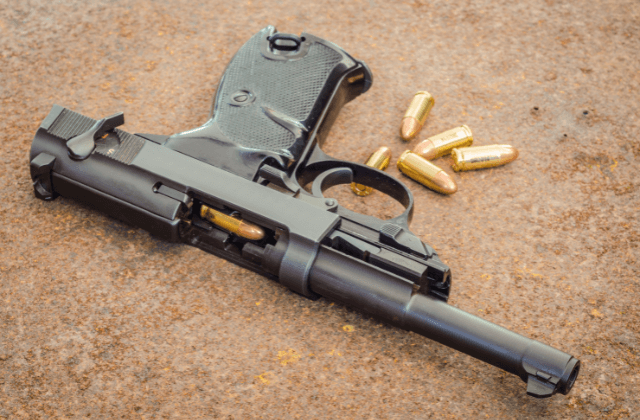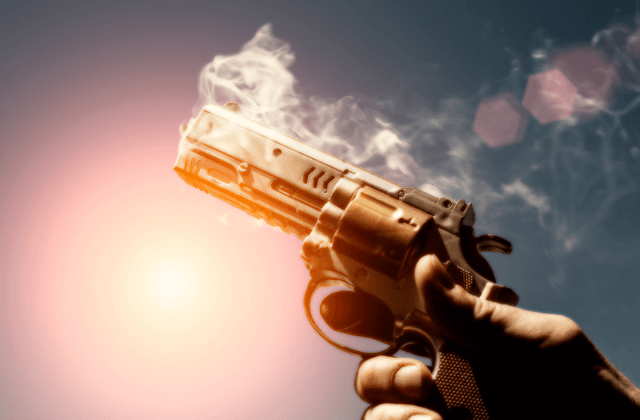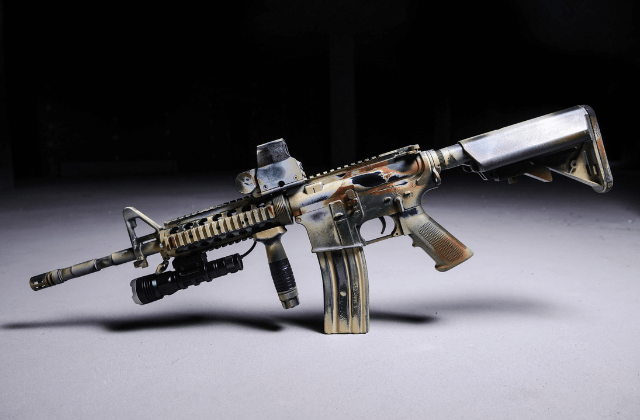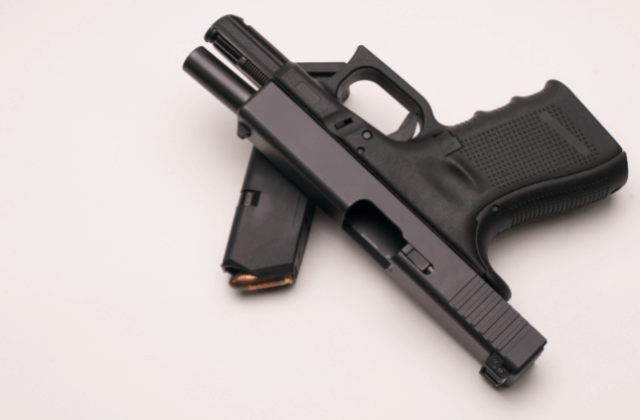This site contains affiliate links. As an Amazon Associate, I earn a commission from qualifying purchases at no extra cost to you. Full Disclosure Here.
Guns jam.
While jams can be minimized with things like proper maintenance, good shooting technique, and usage of quality ammunition in good condition, jams are still an annoying but unavoidable part of shooting.
The inevitability of jams as well as their potential for danger makes knowing how to unjam a gun safely absolutely essential.
In this guide, we’ll explore everything you need to know about jams. We’ll start with why guns jam in the first place, then go over how to unjam each of the most common types of jams.
What causes a jam in guns?
There are a few different reasons that a firearm can jam, the most common being faulty ammunition, mechanical problems with the firearm, or poor technique on the part of the shooter. However, jams can still occur even with impeccable usage, pristine maintenance, and perfect ammo condition.

The most common types of gun jams are misfire, hang fire, failure to eject, and failure to feed jams. Each occurs for different reasons.
Misfire jams, also called failure to fire jams, occur when the ammo primer doesn’t ignite the propellant or when the firing pin or striker doesn’t detonate the primer in the first place, generally as a result of a primer strike that’s too light or a defective primer. When a misfire jam occurs, you’ll hear that telltale click, but then nothing else happens.
A hang fire is a similar problem with a different cause. In fact, when you first pull the trigger, a hang fire and a misfire look identical. However, with a hang fire, the round does end up firing after a delay, so in the event of an apparent misfire or hang fire, it’s incredibly important to keep the gun pointed down range until the jam is cleared. Generally, hang fire jams occur due to a faulty primer, but they can also result from a problem with your firing pin or spring.
Failure to eject jams occurs when the case doesn’t clear out of the chamber after firing. These are generally a result of shooters using weak grips when firing.
Finally, a failure to feed occurs when a round won’t feed into the chamber in the first place. This is another jam that can occur due to a limp grip, but it can also happen if the magazine isn’t properly seated or has a mechanical issue.
Another jam that can occur, but is far rarer than the previous four, is called a squib. Squibs occur when the round doesn’t produce sufficient energy to fully push the bullet out of the gun, leaving the bullet to be stuck somewhere in the barrel. This is very dangerous because the bullet will block bullets and gases from follow-up shots and can potentially cause serious damage to both the firearm and the shooter.
Squibs can occur with any ammunition and firearm, but fortunately, they’re exceptionally rare with factory ammo and modern firearms.
How to Unjam a Gun? [Step-by-step solution]
Now that you know why guns jam in the first place, let’s talk about how to rectify each of the common jams.
Misfire Jams
In the case of an apparent misfire, the first thing to do is continue to hold the firearm firmly pointed in a safe direction (so probably downrange) for several minutes just in case it’s actually a hang fire.

Once you’ve confirmed it’s not a hang fire, simply remove the round. Then you can inspect the round to determine if it was the source of the misfire.
Pay particular attention to the primer. If the primer has an indent in the center, you can be pretty sure that the ammunition was the problem and safely dispose of the round.
If the primer doesn’t have an indent or has an indent of center, the problem is likely a mechanical issue in your gun.
Hang Fire Jams
The bad thing about hang fire jams is that you can’t initially tell if it’s a hang fire or misfire, so to start, you need to make sure you keep your gun pointed in a safe direction in case the round does end up firing. Now remove the magazine and clear the chamber. Only move your gun from pointing downrange once you’ve confirmed the gun is completely empty.

You can now inspect the ammunition (or just the cartridge, if the round ended up firing) and firearm like you would with a misfire jam.
Failure to Eject Jams
Failure to eject jams, also sometimes called stovepipes, are fortunately pretty easy to deal with.
First, tilt your gun 90 degrees to the side so that gravity is on your side. Then you can use the tap-rack-bang method to clear the jam. That means tapping the bottom of the magazine to ensure that it’s properly seated, racking the slide, then aiming and firing again. If the round still doesn’t feed, you need to check your firearm for a mechanical problem.
However, if the round is already partially sticking out of the chamber, you shouldn’t do the tap-rack-bang method. In this case, you’ll again want to tilt the gun on its side, but then you’ll just want to kind of swipe at the round to clear it from the chamber.
Failure to Feed Jams
Failure to feed jams are another jam that are usually pretty easy to resolve. It’s mostly just troubleshooting the problem.

You’ll first want to make sure that the magazine is properly seated. Tap it to make sure it’s firmly in place, or completely remove and reseat the magazine.
If that’s not the problem, try lubricating the chamber and magazine feed lips to help encourage a feed.
If that still doesn’t work, you’ll want to make sure your magazine is in good shape. Check the magazine spring and follower in particular. If you have another magazine, try shooting that instead, using the same ammunition.
Finally, you’ll want to swap ammo if it’s not the magazine. Some guns are pickier than others about what ammunition they’ll cycle.
Squibs
With squibs, the most important thing is to pay attention while shooting, so you catch it before firing a dangerous follow-up shot. Make sure you see an impact for every pull of the trigger. If you don’t, or if a shot sounds odd or unusually quiet, or you feel lighter than normal recoil, immediately stop shooting and unload your gun.
Next, disassemble your firearm and take a look down your barrel to check for a lodged bullet. If you see one, you need a wooden rod or cleaning rod also use a cleaning solvent, ideally one close to the diameter of your gun’s bore. Once you have one, stick it into the gun’s barrel via the end farthest from the stuck bullet and gently force the bullet out of the opposite end by tapping it.
FAQs
Semi-automatics and automatics are perhaps the guns best known for jamming, but bolt actions are also more prone to jamming. Revolvers are much less likely to jam due to the way they chamber rounds. However, any firearm can experience jams.
Any semi-auto can jam, and Glocks are no exception. With that said, Glocks are known for being exceptionally reliable, so you shouldn’t be getting frequent jams in a Glock. Jams in Glocks tend to stem from improper maintenance or usage or from using faulty ammunition.
When a round or, more commonly, just the casing, gets stuck in the chamber instead of properly ejecting, it’s called a failure to eject. Fortunately, this is a relatively safe, easy-to-correct jam. All you have to do is perform a tap-rack-roll or swipe at the round with your hand.
Conclusion
Gun jams can range from inconvenient to dangerous, depending on the circumstances, so knowing how to deal with them quickly and efficiently is important. You should now know everything you need to diagnose and deal with common jams in the field.
We recommend regularly practicing your malfunction-clearing drills, as jams are just a fact of life when shooting any firearm. Being able to clear them is just a necessary skill, so make sure you practice, practice, practice.

